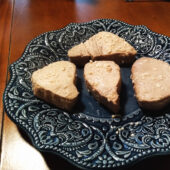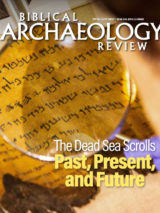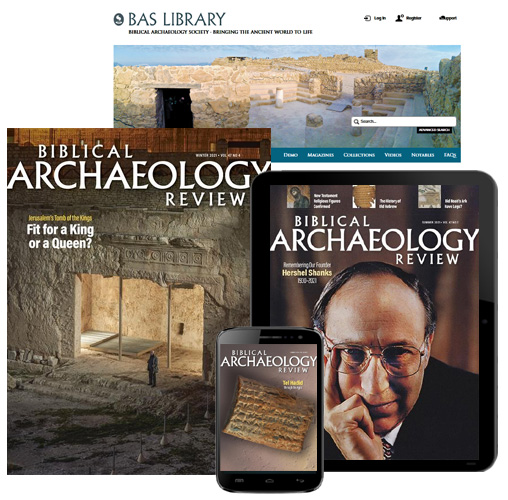What Is Ancient Egyptian?
The language of pharaonic Egypt

Egyptian hieroglyphic writing was used mainly for monumental purposes, like in this painted relief from the Osiris temple at Abydos built by Ramesses II in c. 1270 BCE. The Walters Art Museum, Public Domain.
The Egyptian language is the sole representative of an autonomous branch of the Afro-Asiatic (formerly Semito-Hamitic) language family. As such, Egyptian is related to both the Semitic languages of the Levant and the various languages of northern Africa. Ancient Egyptian’s closest relatives include Semitic (such as Arabic, Hebrew, and Ethiopic) and Berber. Like the Semitic languages, Egyptian exhibits three sentence types: nominal, adverbial, and verbal, where the predicate is a noun, an adverb, or a verb, respectively.
Now extinct, Egyptian was the mother tongue of ancient Egyptians for more than four millennia, and it ceased to function as a living language only several centuries after the Arab conquest of Egypt in 641 CE. To some extent, it was likely read and understood beyond the borders of ancient Egypt, depending on territorial expansion and commercial ties. There clearly were numerous regional dialects of Egyptian spoken across the land, but given the nature of the Egyptian writing system, which is purely consonantal, dialectal variations became fully visible only in its final stage, Coptic, for which Egyptians of the first centuries of Common Era adopted the Greek alphabet. Before Coptic, we have only hints, such as in a letter from around 1200 BCE that has the writer complaining about his correspondent’s language being as incomprehensible as that of a southerner speaking with a northerner.

The elegant, symmetrical hieroglyphs on this alabaster vessel identify its owner as King Pepi I (2276–2228 BCE). They also indicate the jar was used at the Sed-festival celebrating the pharaoh’s 30-year jubilee. The Walters Art Museum, Public Domain.
The history of ancient Egyptian can be divided into two major phases that differ typologically in the nominal syntax and the verbal system: Earlier Egyptian and Later Egyptian. Earlier Egyptian was spoken until 1300 BCE, although in formal religious texts it survived until the second century CE. It expressed gender and number but lacked the definite article; and verbal phrases followed the verb-subject-object pattern (“listen-he to her”). Earlier Egyptian included three distinctive stages: Old Egyptian, Middle (Classical) Egyptian, and Late Middle Egyptian. Although Middle Egyptian gradually morphed into Late Egyptian (see below), it remained the standard hieroglyphic language for the rest of ancient Egyptian history. Used primarily in religious texts, Late Middle Egyptian extended into the Greco-Roman period and included the so-called Ptolemaic Egyptian preserved in extensive temple inscriptions of the period.
Our website, blog and email newsletter are a crucial part of Biblical Archaeology Society's nonprofit educational mission
This costs substantial money and resources, but we don't charge a cent to you to cover any of those expenses.
If you'd like to help make it possible for us to continue Bible History Daily, BiblicalArchaeology.org, and our email newsletter please donate. Even $5 helps:

Later Egyptian differs substantially from Earlier Egyptian in that it expressed grammatical categories with prefixes (not suffixes), shifting the verbal pattern to subject-verb-object (“he-listen to her”). It also began to use the numeral “one” as the indefinite article (“a” or “an”) and the demonstrative pronoun “this” as the definite article (“the”). As a written language, Later Egyptian lasted from 1300 BCE to the Middle Ages, and it included Late Egyptian, Demotic, and Coptic. As a spoken language, however, its earliest stage, which we call Late Egyptian, emerged already around 1600 BCE and remained in use until about 600 BCE, when it was superseded by Demotic. Demotic developed from Late Egyptian in the mid-seventh century and lasted until the fifth century CE, overlapping with the final stage of the Egyptian language, Coptic, which then survived as a spoken language until about the 11th century.

Inventory tags from Abydos are the earliest examples of hieroglyphic writing. Courtesy Joukowsky Institute for Archaeology and the Ancient World.
The earliest known examples of Egyptian writing were excavated at Abydos, some 300 miles south of Cairo. They are inventory tags made of ivory and bone and measuring less than 1 inch per side. They each contain no more than three distinctive images, which likely identified commodities, their provenance, and quantity. Scholars generally consider these signs to be proto-hieroglyphs, as some of them later appear in actual hieroglyphic writing and seem to have phonetic value (in contrast to mere pictographs standing for concrete objects). Coming from the site’s extensive cemetery of Predynastic and Early Dynastic kings, these labels date from around 3400 to 3200 BCE and may thus predate the earliest known examples of cuneiform writing.
The Egyptian language was historically written in four distinctive scripts: hieroglyphic, hieratic, Demotic, and Coptic. Except for the last one, none of the writing systems expressed vowels. The earliest of these are hieroglyphs. Termed so by the ancient Greek historian Herodotus, the hieroglyphs were mostly used to record monumental and sacral texts, such as on temple walls, statues, coffins, and stelae. All hieroglyphs are pictures of real or imagined things, such as legs, a papyrus roll, or a mythical creature. These can be used in three different ways. Hieroglyphic signs can function as ideograms, representing the actual depicted thing (for example, a picture of legs means “legs”). This is how we use emojis or understand “I ♥ NY” t-shirts. Hieroglyphic signs can also be phonograms, where these same pictures are used for their phonetic (sound) value, such as when the ground plan of a house (per) is combined with other signs to write such unrelated words as perit, “emergence.” This is how English is written, except that our signs/characters have highly abstract shapes and are limited to 26. Finally, most signs can be used as determinatives, added at the end of a word to help readers determine the general idea of the word written with phonograms and, hence, not representing the depicted thing. For example, three little circles following a word written with the signs for house and mouth indicate that the preceding signs are to be read phonetically to mean “seeds” and that the word has nothing to do with actual houses or mouths.

Religious texts and private documents written on papyrus mostly used the cursive script known as hieratic, as in this Book of the Dead from c. 1070–945 BCE. Metropolitan Museum of Art, NY, Public Domain.
When written with a reed pen and ink on papyrus or wood, hieroglyphs were produced in a much simpler way called cursive hieroglyphs, although it is still fairly easy to identify the individual shapes of their hieroglyphic counterparts. Early on, however, scribes developed a true cursive version of hieroglyphs that we call hieratic. The hieratic script was used widely to record administrative and religious texts and to write letters or literature. With the emergence of Demotic, in the mid-seventh century BCE, came an even more cursive and abbreviated script. The language of administration and literature, Demotic was written primarily on papyrus. Grammatically, it naturally developed from Late Egyptian, but its script is radically different—a more cursive variant of the hieratic script. One of the most curious examples of Demotic script is written in the Aramaic language to record biblical Psalms. This so-called Papyrus Amherst 63 was found in southern Egypt in the late 19th century and likely originated with the Jewish community on Elephantine.

Hieratic and its hieroglyphic counterpart of a section from the Maxims of Ptahhotep, a Middle Egyptian wisdom text attributed to the vizier Ptahhotep, from c. 2350 BCE. From James P. Allen, Middle Egyptian (2014), p. 7.
While cursive hieroglyphs, hieratic, and Demotic were mostly written horizontally from right to left, hieroglyphs could be written in any direction, except from the bottom up. As an example, our first image above reads vertically from the right; the second image reads horizontally from the center to both left and right and then vertically down. Finally, the hieratic text of the papyrus above reads horizontally from right to left, but in the opening vignette, the right four columns of hieroglyphs read vertically from left, while the four columns on the left read vertically from the right. This versatility was useful in producing symmetrical designs and could adapt to any accompanying pictorial elements.

The last stage of the Egyptian language, Coptic, which emerged in the third century CE, adopted the Greek alphabet. It was initially the language of the Christian church that grew to become the language of official administration, replacing Greek, before it, too, was superseded by Arabic. When the last hieroglyphic inscription was inscribed, in 436 CE, its language was already dead. It had become a mysterious language written with esoteric signs, until 200 years ago, when Champollion succeeded in cracking the code of Egyptian hieroglyphs and began to decipher the language behind them.

Demotic was both the latest form of cursive Egyptian script and a stage of the Egyptian language. Dated to December 6, 127 BCE, this inscribed sherd contains a record of an oath taken by one Patasetat. Metropolitan Museum of Art, NY, Public Domain.
For much of the Late Bronze Age (c. 1550–1200 BCE), Canaan was under intermittent Egyptian rule, and isolated Egyptian incursions into the southern Levant continued well into the early Iron Age. When we also consider the exceptional relevance of Egypt to the biblical traditions of Joseph, the Exodus from Egypt, and the emergence of ancient Israel, the importance for biblical studies of exploring the Egyptian sources becomes obvious. In Bronze Age Canaan, Egyptian presence is attested also in the archaeological record, such as in the destruction of Gezer or in Egyptian statuary found at Hazor.
When Canaan was dominated by Egypt, scarabs and other examples of material culture, such as statues and monumental art, streamed into the region. The most prominent and ubiquitous examples of Egyptian writing preserved in the Levant are scarabs. In Egypt proper, the better known texts relevant for biblical studies include the Bubastite Portal in the temple of Amun at Karnak that celebrates military victories in the Levant of Pharaoh Shoshenq I (biblical Shishak), who campaigned through much of Israel and Judah in c. 925 BCE (see 1 Kings 14:25–26; 2 Chronicles 12:4). BAR readers will also recognize the famed Merneptah Stele excavated at Thebes and containing the first mention of a people called “Israel.” Also important are lists of Canaanite cities conquered by Pharaoh Thutmose III (r. 1479–1425), sculpted on the temple walls at Karnak. To fully engage with this Egyptian evidence, one must read the Egyptian language.

During his 1458 BCE military campaign into the southern Levant, King Thutmose III defeated a coalition of Canaanite city-states, which are listed in this relief in the temple of Amun at Karnak. Hannah Pethen, CC BY-SA 2.0, via Wikimedia Commons.
Students of Egyptian typically begin with Middle (Classical) Egyptian, which preserved a variety of literary works, including wisdom literature and stories like the Tale of Sinuhe and the Shipwrecked Sailor. In English, the most widely used teaching grammar of Middle Egyptian is James P. Allen’s Middle Egyptian: An Introduction to the Language and Culture of Hieroglyphs, accessible from the Internet Archive. The handiest dictionary is Raymond Faulkner’s concise dictionary of Middle Egyptian. Finally, Thesaurus Linguae Aegyptiae is an electronic corpus of a wide variety of Egyptian texts for private study.
For a detailed discussion of the Egyptian sources for the history of Canaan, Donald B. Redford’s Egypt, Canaan, and Israel in Ancient Times is a good starting point, while the edited volume Did I Not Bring Israel Out of Egypt? explores specifically the biblical narratives of Exodus vis-à-vis biblical, archaeological, and Egyptian evidence.
Related reading in Bible History Daily:
All-Access members, read more in the BAS Library:
You Too Can Read Hieroglyphics
Narmer’s Enigmatic Palette: What Does It Tell Us About Egypt’s First Kings?
Pharaoh’s Fury: Merneptah’s Destruction of Gezer
Not a BAS Library or All-Access Member yet? Join today.
Must-Read Free eBooks
Want more Bible history?
Sign up to receive our email newsletter and never miss an update.
All-Access Pass
Dig into the world of Bible history with a BAS All-Access membership. Biblical Archaeology Review in print. AND online access to the treasure trove of articles, books, and videos of the BAS Library. AND free Scholar Series lectures online. AND member discounts for BAS travel and live online events.
Subscribe Today









